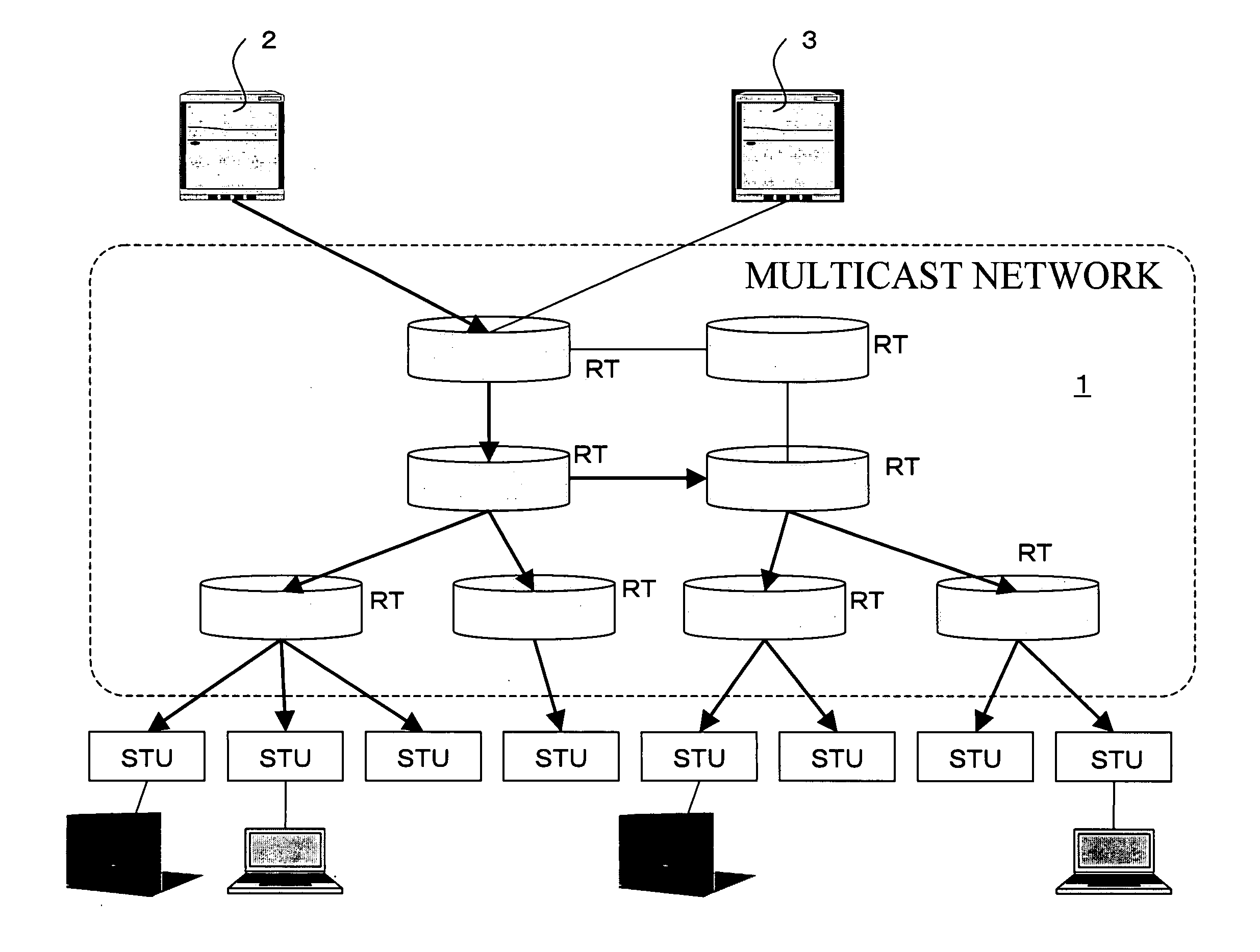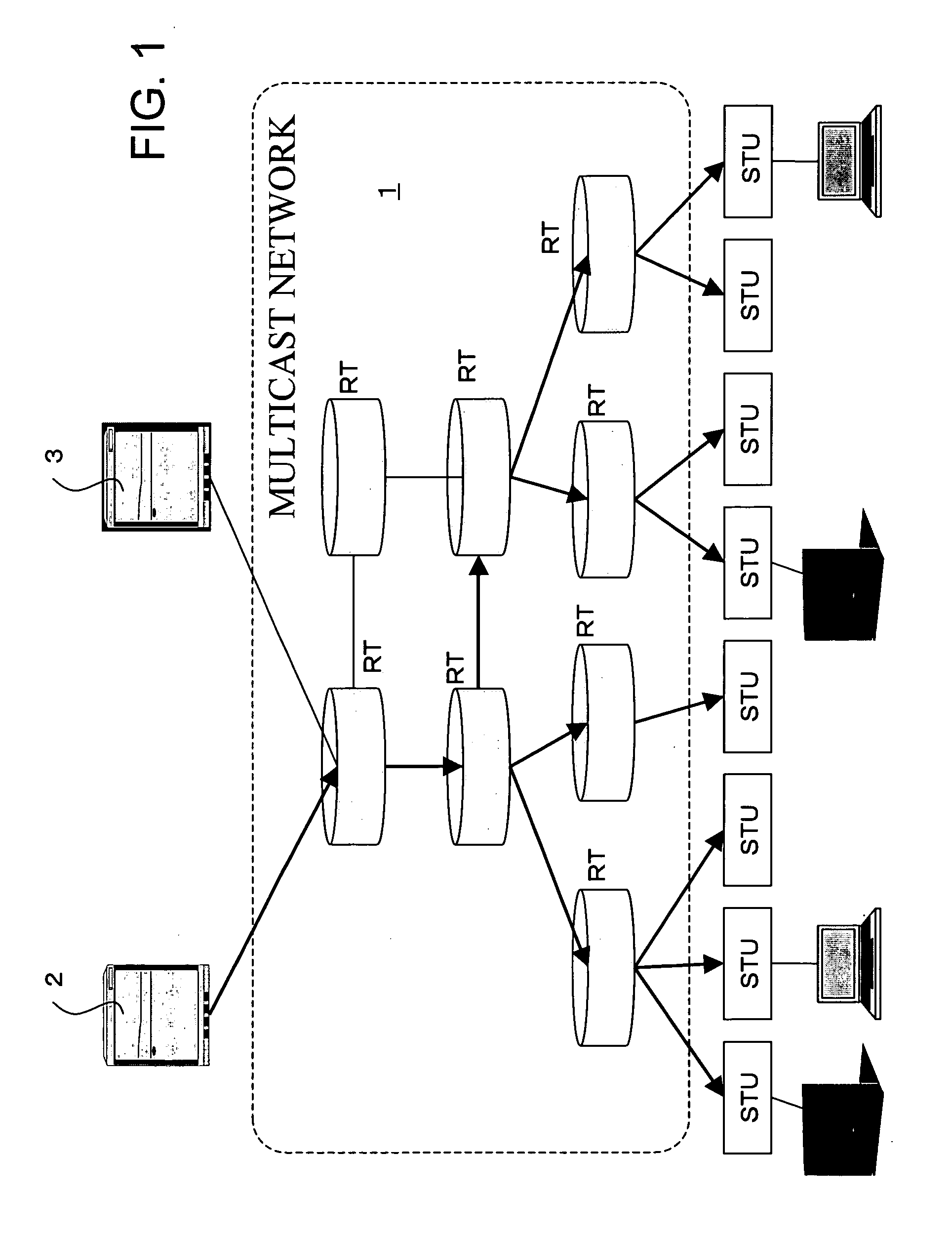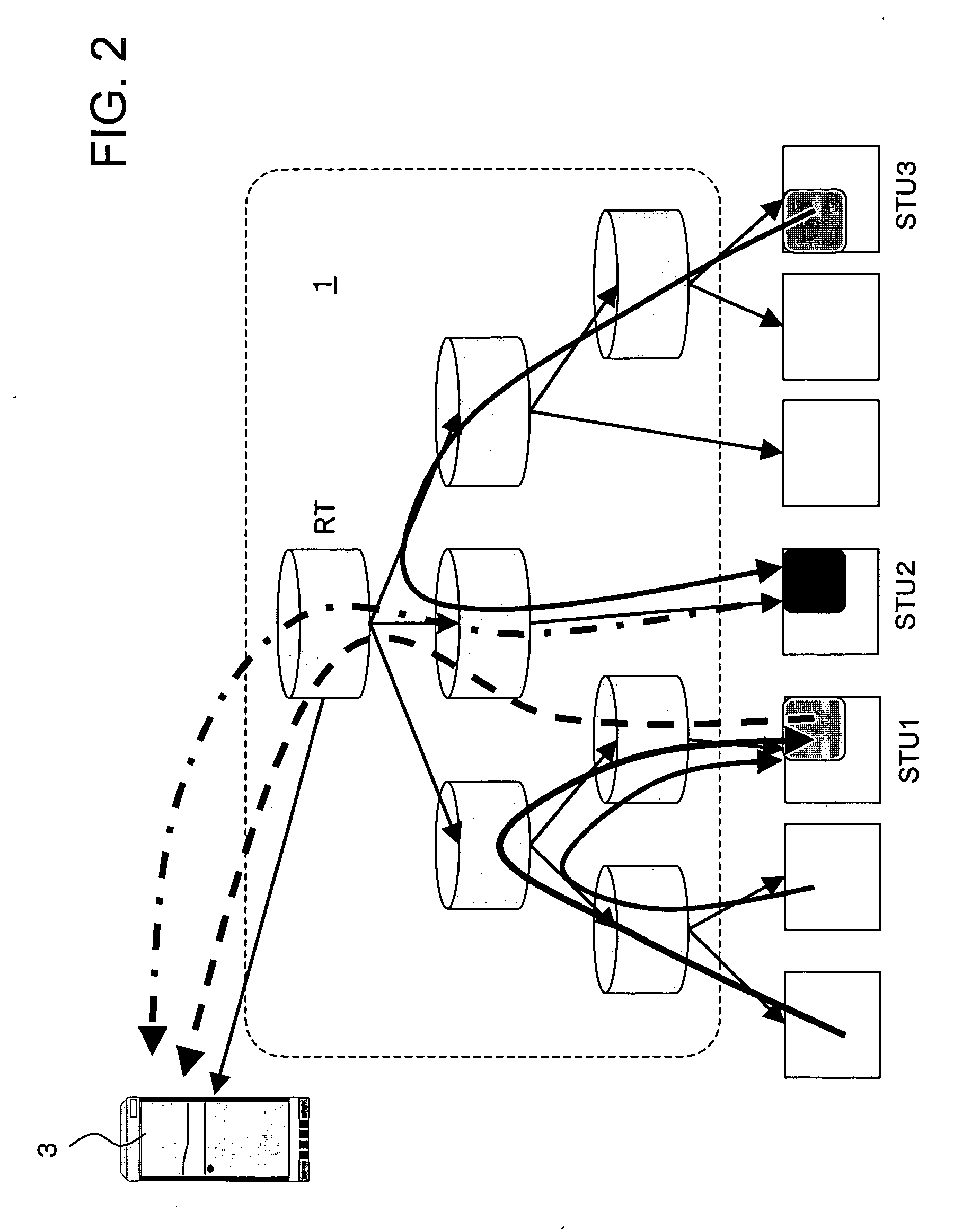Multicast network monitoring method and multicast network system to which the method is applied
a network monitoring and multicast technology, applied in the field of multicast network monitoring methods and multicast network systems, can solve problems such as delay in detection of failures, intervals of sending ping, and content providers cannot know the occurrence of failures
- Summary
- Abstract
- Description
- Claims
- Application Information
AI Technical Summary
Benefits of technology
Problems solved by technology
Method used
Image
Examples
first embodiment
[0064]FIG. 4 is an operation flow of a first embodiment of the present invention corresponding to FIG. 3. Description will be made of an operation example of the multicast network system with reference to FIG. 4.
[0065]In FIG. 4, I is an operation flow portion for the monitoring server 3 and II is an operation flow portion for the acknowledgment agent.
[Monitoring Server's Process I]
[0066]In the monitoring server 3, an acknowledgment probability / acknowledgment area determining unit 30 accepts an activation request from a system administrator along with arguments, which are an acknowledgment probability, the number of agents, the number of acknowledgment messages used as a determination threshold, a transmission / determination interval, and a monitoring group address (step S11).
[0067]For example, it is assumed that the arguments of the activation request are the acknowledgment probability of 5%, the number of agents of 10,000, the determination threshold x (=450) for the expected number...
second embodiment
[0088]A second embodiment is most appropriate when a system administrator, etc., want to know a situation / abnormality in a certain area. The determination accuracy can be improved by narrowing down a certain area.
[0089]FIG. 7 is an operation flow of the second embodiment and the operation of the embodiment will be described with reference to FIG. 7.
[Monitoring Server's Process I]
[0090]In the monitoring server 3, the acknowledgment probability / acknowledgment area determining unit 30 accepts an activation request from the system administrator along with arguments, which are an acknowledgment probability, an acknowledgment area identifier, the number of agents in the acknowledgment area, the number of acknowledgment messages used as a determination threshold, a transmission / determination interval, and a monitoring group address (step S11).
[0091]For example, it is assumed that the arguments of the activation request are the acknowledgment probability of 5%, the number of agents in the a...
third embodiment
[0109]A feature of a third embodiment is intended to improve the determination accuracy by eliminating the acknowledgment messages belated for some reason.
[0110]Among the functional blocks of the monitoring server 3 and the acknowledgment agent STU shown in FIG. 3, the relationships in process procedures are the same as the preceding embodiments and, therefore, description correlated with these functional blocks is omitted in the following description of the embodiment.
[0111]The process of the third embodiment can be described with reference to the operation flow shown in FIG. 4, which is used in the description of the first embodiment.
[Monitoring Server's Process]
[0112]The process of the monitoring server 3 will be described.
[0113]An activation request is accepted from the system administrator along with arguments, which are an acknowledgment probability, an acknowledgment area identifier, the number of agents in the acknowledgment area, the number of messages used as a determinati...
PUM
 Login to View More
Login to View More Abstract
Description
Claims
Application Information
 Login to View More
Login to View More - Generate Ideas
- Intellectual Property
- Life Sciences
- Materials
- Tech Scout
- Unparalleled Data Quality
- Higher Quality Content
- 60% Fewer Hallucinations
Browse by: Latest US Patents, China's latest patents, Technical Efficacy Thesaurus, Application Domain, Technology Topic, Popular Technical Reports.
© 2025 PatSnap. All rights reserved.Legal|Privacy policy|Modern Slavery Act Transparency Statement|Sitemap|About US| Contact US: help@patsnap.com



